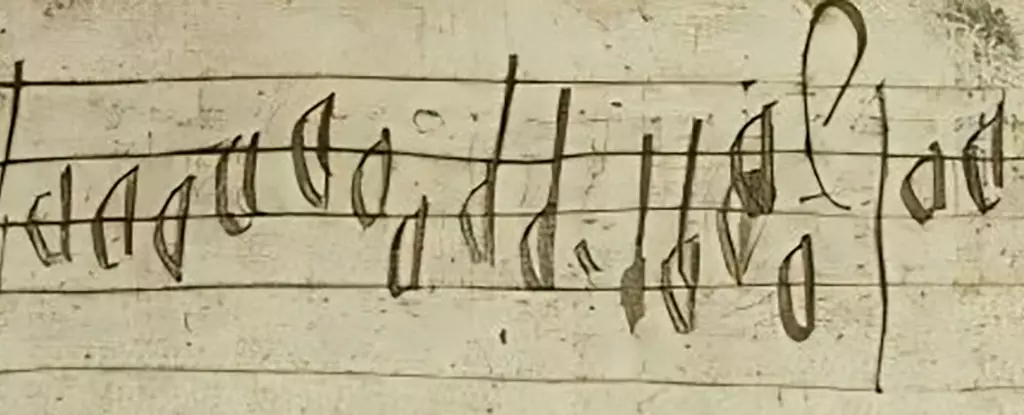Music, at its core, transcends time, acting as a vessel transporting individuals across eras and cultures. This intricate relationship with sound has recently brought to light an intriguing 55-note fragment of sheet music, offering a rare glimpse into Scotland’s musical past. Unearthed from the margins of the historically significant Aberdeen Breviary—a prayer book that holds its own in the annals of Scottish history—this musical notation has evoked excitement among musicologists and historians alike. The Aberdeen Breviary, printed in 1510, is regarded as a pioneering work in the Scottish literary canon, yet it carried within it the whispers of a bygone musical tradition.
Researchers from KU Leuven in Belgium and the University of Edinburgh have embarked on a meticulous analysis of this fragment, which had been previously overlooked until its rediscovery in 2011. Their efforts have led to an identification of the piece with a little-known chant known as Cultor Dei, memento, a hymn with roots in Christian liturgy and still sung in certain Anglican circles during Lent today. The significance of this finding cannot be overstated—it represents a rare instance of liturgical music composed in pre-Reformation Scotland, a timeframe often regarded as devoid of such artifacts.
The sheet music itself remains devoid of titles or authorship, yet its arrangement reveals a polyphonic structure—an intricate interplay of multiple melodies. This aspect of the music not only highlights the sophisticated musical practices of the time but provides the researchers with a foundation to reconstruct the remaining harmonies and melodies that have faded into silence over the centuries.
The discovery challenges long-held beliefs about the musical landscape of pre-Reformation Scotland. Musicologist James Cook from the University of Edinburgh remarked on the previously prevalent notion that this period lacked any meaningful sacred musical expression. However, the fragment sheds light on a rich tradition of musical creation that flourished in Scotland’s ecclesiastical settings. The substantiation of high-quality musical production ties Scotland’s cultural narrative more closely to that of the broader European context, suggesting that even amidst the turmoil of the Reformation, artistic expression persevered.
David Coney, another key figure in this research, emphasizes the relic’s value, noting that from a solitary line of music, scholars can now bridge a gap of nearly 500 years. This evokes a sense of reverence for the hymn—a previously muted echo of Scotland’s religious and musical identity. The analysis of this fragment cultivates a deeper comprehension of Scotland’s liturgical practices and signals the potential for further discoveries hidden within overlooked manuscripts.
The implications of this research extend beyond the immediate findings. The team’s investigation into the ownership and origin of the Aberdeen Breviary has revealed ties to significant ecclesiastical sites, such as Aberdeen Cathedral and St Mary’s Chapel in Rattray. Yet, the enigmatic authorship of the musical notation remains elusive, sparking further contemplation about the composers whose voices disappeared alongside their creations.
This discovery serves as an impetus for future explorations, inspiring researchers to delve into other ecclesiastical texts to uncover similar musical fragments that may lie dormant. As Paul Newton-Jackson articulates, the blank pages of sixteenth-century printed books could very well serve as a treasure trove of untapped historical and musical insights waiting to be discovered.
As we draw from the wellspring of Scotland’s past through this resurrected hymn, it becomes clear that music serves not only as an art form but as a crucial component of cultural heritage. The careful preservation and analysis of such artifacts enable us to recount stories that have lingered on the fringes of history, waiting for the right moment to be told. Each note, each harmony, pulsates with the essence of those long gone, providing a profound resonance that continues to echo in the contemporary landscape of music and beyond. Through the dedication of scholars and the magic of discovery, we can redefine our understanding of historical musical traditions, ensuring that they do not remain sandwiched between the pages of time, but thrive anew in our collective memory.



Leave a Reply